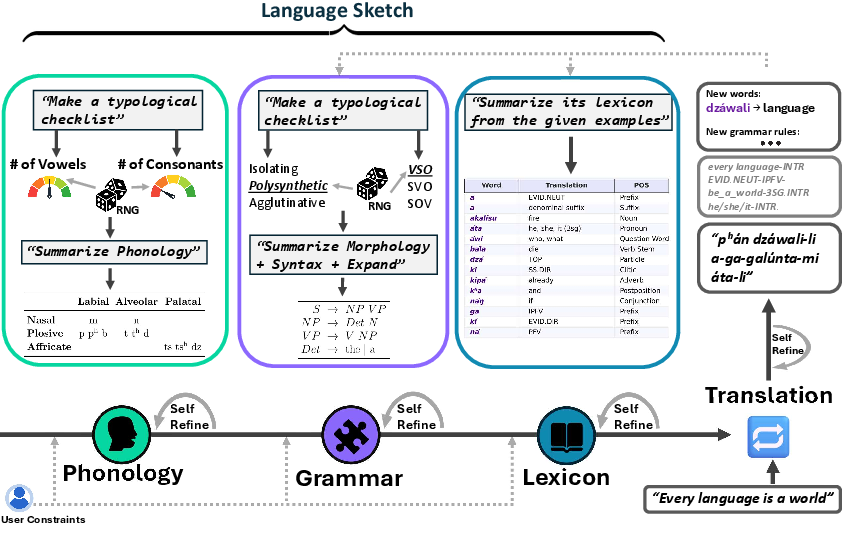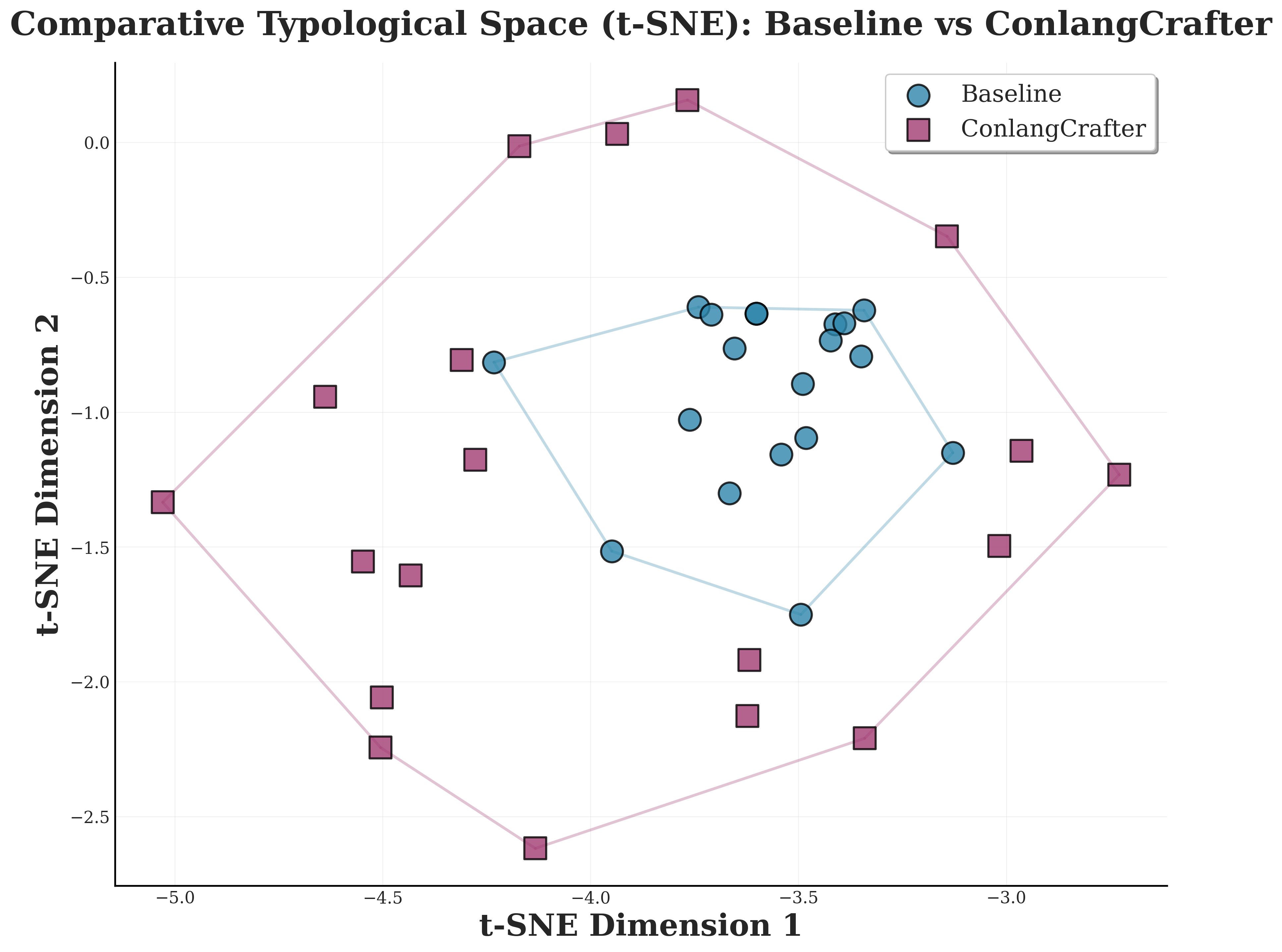- The paper presents a novel multi-hop LLM pipeline that decomposes conlang generation into sequential layers—phonology, grammar, and lexicon—to ensure diversity and coherence.
- It employs controlled randomness with typological checklists and iterative self-refinement to enhance internal consistency in the language creation process.
- Evaluation using Hamming distances and t-SNE visualizations demonstrates significant improvements in typological diversity compared to baseline methods.
ConlangCrafter: Constructing Languages with a Multi-Hop LLM Pipeline
The paper "ConlangCrafter: Constructing Languages with a Multi-Hop LLM Pipeline" presents an innovative methodology to generate constructed languages (conlangs) using LLMs. By leveraging a multi-hop, stateful pipeline, the research explores the intricacies of language generation across phonology, grammar, and lexical layers, ensuring each resultant conlang is both diverse and internally coherent.
Methodology
ConlangCrafter employs a structured pipeline, wherein the language generation process is decomposed into multiple linguistic layers: phonology, grammar, and lexicon. Each layer is generated sequentially by utilizing the LLM's meta-linguistic understanding, introduced randomness, and self-refinement capabilities.

Figure 1: ConlangCrafter constructs languages with a multi-hop, stateful pipeline by decomposing them into linguistic layers and generating each in turn with an LLM.
Stage A: Language Sketch Bootstrapping
In this stage, the initial description of a language's core components is generated and stored as a language sketch. The multi-hop pipeline incrementally updates this sketch by addressing each linguistic component (phonology, grammar, lexicon) in a linear sequence. Randomness is injected through typological typology checklists, enhancing diversity, while self-refinement ensures logical consistency.
Stage B: Constructive Translation
This stage involves translating new texts using the generated language's sketch to create a dynamic corpus. Emphasizing "constructive translation," it allows new lexical and grammatical elements to be added to the language sketch if required, an approach unlike standard translation tasks which typically cannot tolerate hallucinations.
Evaluation Metrics
A comprehensive automatic evaluation framework is presented, tailored to assess the conlangs' typological diversity and internal consistency. Instead of relying on ground-truth comparisons, the framework employs a judge LLM to ascertain conlangs' novelty and coherence:
- Typological Diversity: Measured using Hamming distances over selected WALS features, this metric assesses the variance between generated languages.
- Internal Consistency: Evaluated across language sketches and translations, consistency is determined by the coherence of sketches and their adherence during translation processes.
Results and Findings
Quantitative results demonstrate that ConlangCrafter generates languages with high typological diversity and consistency. These metrics underscore the efficacy of the randomness injection and self-refinement approaches in achieving diverse and coherent outputs.

Figure 2: t-SNE visualization illustrates the typological diversity of ConlangCrafter-generated languages relative to baseline methods.
The use of self-refinement proved crucial in improving logical consistency across iterations, showcasing the potential of iterative feedback in refining model outputs. Additionally, qualitative analyses depict ConlangCrafter's ability to generate both creative and linguistically complex conlangs.
Application and Implications
ConlangCrafter demonstrates significant potential in fields requiring procedural language generation, such as video games and artificial societies, where unique languages enhance world-building. Moreover, it offers hobbyist conlangers a novel computational tool, easing the traditionally labor-heavy conlang creation process.
Conclusion
The paper presents a robust methodology for conlang generation using LLMs, capable of producing diverse and internally consistent artificial languages. The approach offers new possibilities for computational creativity and anticipates future developments that might include expanded semantic and pragmatic language aspects, multi-modal language components, and further efficiency improvements.

